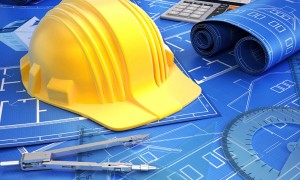A brain-based classroom is one in which students are actively engaged in learning. What exactly does it mean for students to be actively engaged? It certainly is not having students complete worksheets, answer basic questions, or take notes of a lecture. Take a minute to think about the definitions of these two words. The word active means moving, working, participating, full of energy, and causing action. The word engage means to require use of/occupy, to attract and hold attention, and to involve. So basically, when students are actively engaged, they are participating and working in a way that is active, full of energy and motion, and they are involved and interested in what is being learned.
Wow! That is a lot to ask from our students, or is it more that it is a lot to ask from us? This type of learning requires much more work and effort on our part in order to be more meaningful for students. It is much easier to read the chapter, answer the questions at the end, and complete a ready-made worksheet. However, there is hope! Many of the new textbooks available now include activities that actively engage students in their learning. Does your textbook have these tips and ideas in the teacher edition? If so, do you ever use those activities in your lesson plans? The next time you sit down to plan lessons, read through the activities provided and think about how you might incorporate them into your lesson. If you don’t have a newer textbook or are simply looking for other ideas to get students actively engaged, the tips provided below are for you.
Games
Have students create their own game that applies the concepts and/or skills learned for a particular unit. This activity also integrates writing since students will need to write out the directions. Take some time to look at educational games already available and analyze these with your students. Help them to see the elements found in a board or card game. Look at how the directions are organized and written so students have a model to follow. One of my students made a Colonies game as a project for our 13 Colonies unit. She was able to show all of her learning through the creation of this game.
There are also many excellent games available these days to help practice reading, spelling, math, science, and social studies skills. How might you use Monopoly, the Allowance game, Scategories, Scrabble, Mastermind, or Taboo in your class? While students may think they are simply playing a game, they are actually applying important skills/concepts learned in class. To take full advantage of this learning opportunity, afterwards, have students discuss the different skills they used while playing the game. Did they learn anything new? This kind of debriefing makes connections between playing the game and your curriculum. Without the debriefing students merely participated in a fun but meaningless activity.
Scavenger Hunt
Create a scavenger hunt of clues, phrases, or questions, and have students read through the chapter to find the answers. It is more of a learning experience if the answers are not immediately visible, especially for older students. Make them read the chapter to be able to answer the questions or find the clue. Allowing students to work in pairs or groups adds an extra element of fun to this activity. Again, take some time to discuss the activity and results with the class when everyone is finished.
Another twist on this activity which requires further thinking on the part of the students is to have them read the chapter first and then create their own scavenger hunt. Students then swap the papers among themselves and have a partner complete their scavenger hunt. Allow the student pairs to discuss the positive and negative aspects of the scavenger hunt created. What was too easy? What was challenging? Were the questions/clues misleading or clearly understandable?
Scripts
Again, this activity works great with textbook reading. Have students work in pairs or groups to turn a historical event, textbook chapter, or story into a play. You could also have students work together to explain a concept or skill through a skit or play. Writing out the script incorporates writing skills into the class and gives you an evaluation tool.
A twist on this activity is to have students rewrite the events or concepts read in the textbook or recently learned through direct instruction as a children’s story. This type of activity requires students to think at higher levels. Comprehension, Analysis, Application, and Synthesis are all involved as students must understand what was read and be able to explain and apply it within a short fictional children’s story.
Learning Stations
You don’t have to be an elementary teacher to make learning stations work. Take your unit and think of five to six different stations of activities or readings for students to complete. Type out the directions for each station, and affix the page to construction paper. We laminate ours so they will last. Next, type out a checklist for students to use when travelling to each station. This will help them know what to complete at each one. To set up, simply put the directions and materials on a group of desks or a table for each “station.” When you are finished, put the laminated directions in a manila folder and label it. Then, stick it in your filing cabinet for next year. I actually laminate reading passages, checklists, etc. so I can use them over and over each year. This type of activity is also a great way to integrate other subject area concepts and skills into your lesson/unit.
With all of these activities, it is important that you are walking around monitoring the entire time to keep students on track. Ask guiding questions to help students accomplish the task and get the most out of the activity. You will also need to take time to go over your expectations for behavior and academic outcomes prior to each activity. This reminder along with constant monitoring helps keep student misbehavior to a minimum. It is also very important that you take time to discuss or “debrief” with students regarding the activity. This type of discussion makes connections between the activity, overall goal, and lesson objective for your curriculum. Don’t settle for time fillers. With just a little preparation and perspiration you can get your students up and moving, engaged in their learning, and loving every minute of it!










